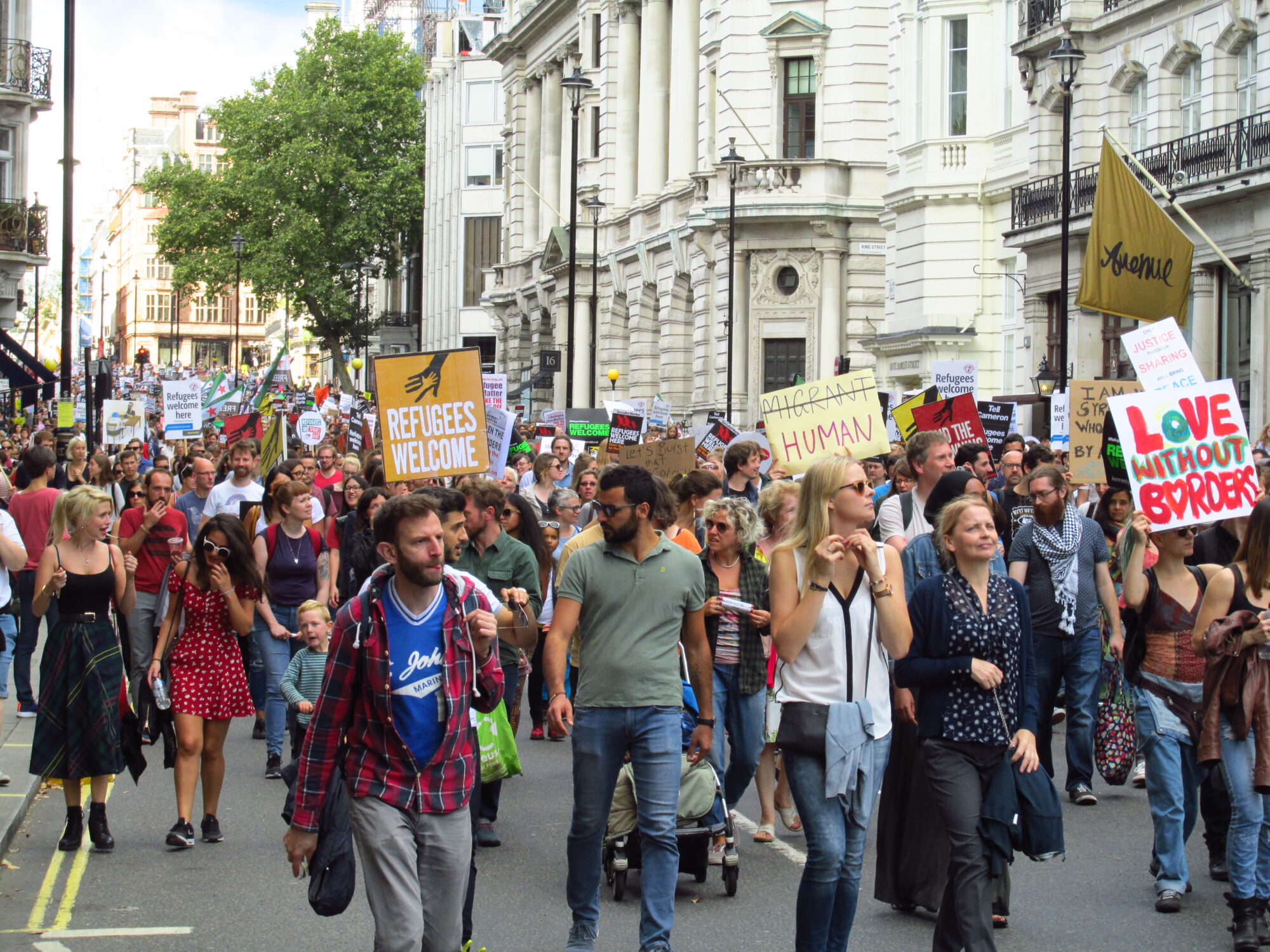Editor’s Note: This piece is brought to you by Nabila Arab. Click on her profile at the bottom of this piece to read more of her work with us or follow her on LinkedIn, here.
For decades, the UK held a reputation as a place of safety. But for many refugees and asylum seekers today, the system feels more like a restriction than a refuge. And while the refugees rise, so too is the frustration, both among those seeking asylum and the communities trying to support them.
The shift didn’t happen overnight. It began over a decade ago with the introduction of the “hostile environment” policy under then-Home Secretary Theresa May. Designed to make life in the UK “as difficult as possible” for those without legal status, it blurred the line between immigration enforcement and civil life, turning teachers, doctors, landlords, and employers into gatekeepers of the border.
These policies have particularly impacted asylum seekers, many of whom arrive through irregular routes due to the lack of safe, legal pathways. Instead of protection, they find themselves subject to surveillance, distrust, and years of legal and emotional limbo.
Brexit and the Changing Story of Control
The 2016 Brexit vote marked more than an exit from the European Union; it redefined how the UK saw itself, particularly in relation to migration. Borders became symbolic, and refugees became part of a larger narrative about sovereignty and control.
The UK’s departure from the Dublin Regulation, which had allowed asylum seekers to be returned to their first EU country of entry, removed an essential layer of regional coordination. In its place, deterrence-based approaches emerged, from proposals to offshore asylum seekers to Rwanda (ruled unlawful by the UK Supreme Court in late 2023) to housing them in disused military sites like Napier Barracks, now set to close by September 2025.
These shifts are not just logistical; they signal a broader political stance that frames asylum as a problem to be managed rather than a responsibility to be fulfilled.
Life on Hold: The Numbers Behind the Stories
By early 2025, the UK had over 77,000 asylum applications in a single year, involving nearly 100,000 individuals. The asylum backlog has surged, with over 41,000 appeals pending, an almost six-fold increase since 2023.
Asylum seekers are typically prohibited from working for at least 12 months, and even then, they are restricted to narrow job categories on the government’s Shortage Occupation List, including roles such as classical ballet dancers or nuclear engineers.
In the meantime, they receive just £49.18 per week — about £7 a day — to cover food, clothes, and essentials. Those in the accommodation where meals are provided get just £8.86 a week.
This isn’t just tough. It’s dehumanising.
The Myth of Integration
The government often speaks of integration, but what does it really look like when you’re not allowed to work, move freely, or live with dignity?
Integration is not a speech. It’s access to education, mental health support, stable housing, and community networks. In countries like Portugal or Germany, refugees are offered work permits within months and receive structured integration support. The UK, by contrast, often traps people in a cycle of poverty and isolation.
And what happens after a positive asylum decision? We don’t really know. There’s little public data on how many refugees find long-term housing, employment, or access to healthcare. The state doesn’t track outcomes, and that’s part of the problem. From GPS ankle tags to biometric scans and even AI tools used to assess “risk,” the UK’s asylum system mirrors the very surveillance many have fled. These practices may be framed as “modernisation,” but in practice, they deepen trauma and fuel mistrust.
Accommodation and Resistance
From hotels to student dorms and disused care homes, asylum housing is under strain, costing the government over £5.5 million per day as of late 2024.
Conditions in places like the Bibby Stockholm barge and Napier Barracks have been criticised as unsafe and isolating.
But despite this, many local communities have stepped in to provide what the state does not — dignity. Across the UK, grassroots groups, councils, and refugee-led organisations are offering legal aid, food, language support, and mentorship. These are the real engines of integration.
Young refugees themselves are also stepping up. Through the Migration Youth and Children Platform and global events like COP28 and the Reshape Europe Conference, I’ve met refugee youth building the solutions they wish they had received. Their message is clear: we are not victims. We are leaders, advocates, and citizens-in-waiting.
The UK at a Crossroads
The UK has a choice. It can continue building a system based on restriction and fear. Or it can choose fairness, efficiency, and dignity — not just for refugees, but for its own integrity as a country that once led on humanitarian values.
Policies like allowing work after six months, reducing the backlog, and ending the use of surveillance-based accommodation are not radical. They’re reasonable. They reflect who we claim to be.
Because refugees don’t come to take — they come to rebuild. They bring strength, stories, and a desire to contribute. What they need is a fair chance.
So the question is: will the UK meet them with a closed fist — or an open door?
